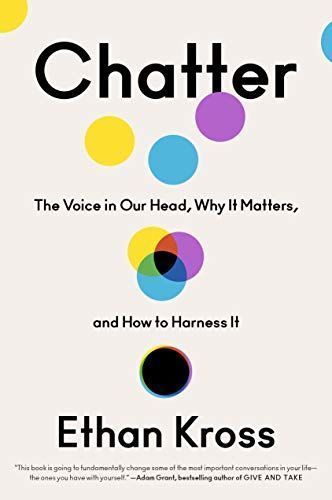
Chatter The Voice in Our Head, Why It Matters, and How to Harness It
An award-winning psychologist reveals the hidden power of our inner voice and shows how we can harness it to live a healthier, more satisfying, and more productive life. "This book is going to fundamentally change some of the most important conversations in your life--the ones you have with yourself."--Adam Grant, bestselling author of Give and Take One of the best new books of the year--The Washington Post, BBC, CNN Underscored, Shape, Behavioral Scientist, PopSugar * Kirkus Reviews, Publishers Weekly, and Shelf Awareness starred reviews * Next Big Idea Club Finalist Tell a stranger that you talk to yourself, and you're likely to get written off as eccentric. But the truth is that we all have a voice in our head. When we talk to ourselves, we often hope to tap into our inner coach but find our inner critic instead. When we're facing a tough task, our inner coach can buoy us up: Focus--you can do this. But, just as often, our inner critic sinks us entirely: I'm going to fail. They'll all laugh at me. What's the use? In Chatter, acclaimed psychologist Ethan Kross explores the silent conversations we have with ourselves. Interweaving groundbreaking behavioral and brain research from his own lab with real-world case studies--from a pitcher who forgets how to pitch, to a Harvard undergrad negotiating her double life as a spy--Kross explains how these conversations shape our lives, work, and relationships. He warns that giving in to negative and disorienting self-talk--what he calls "chatter"--can tank our health, sink our moods, strain our social connections, and cause us to fold under pressure. But the good news is that we're already equipped with the tools we need to make our inner voice work in our favor. These tools are often hidden in plain sight--in the words we use to think about ourselves, the technologies we embrace, the diaries we keep in our drawers, the conversations we have with our loved ones, and the cultures we create in our schools and workplaces. Brilliantly argued, expertly researched, and filled with compelling stories, Chatter gives us the power to change the most important conversation we have each day: the one we have with ourselves.
Reviews
Message Received@message-received
Kendall McClain@kendallmcclain
Fredo Moreno@amoreno
Jaiden Ratti@jaiden
Boothby@claraby
Thomas Plaatsman@lugarhombre
Laura Mitchell Hutchinson@lauraahutchy
Matthew Xu@mfx
Howard Greller@heshiegreshie
michelle cardone@mcardone
Abby@abbywooden
Alejandra RG@alerog
Pratik M@pcmhatre
Zsofia Müller @m_sofia
Jon Eckert@jeckert
katie terzoli@kterzoli
Will Chavez@willchavez
Sapan Parikh@sapan
Konstantin Münster@konstantin
Sergei Khudovekov@khudovekov
Kshitij Bantupalli@skitiz
Rushali Parikh@rushali
Meryn Kae Addison@merynkae
Robert Hinchcliffe@hinchcliffe